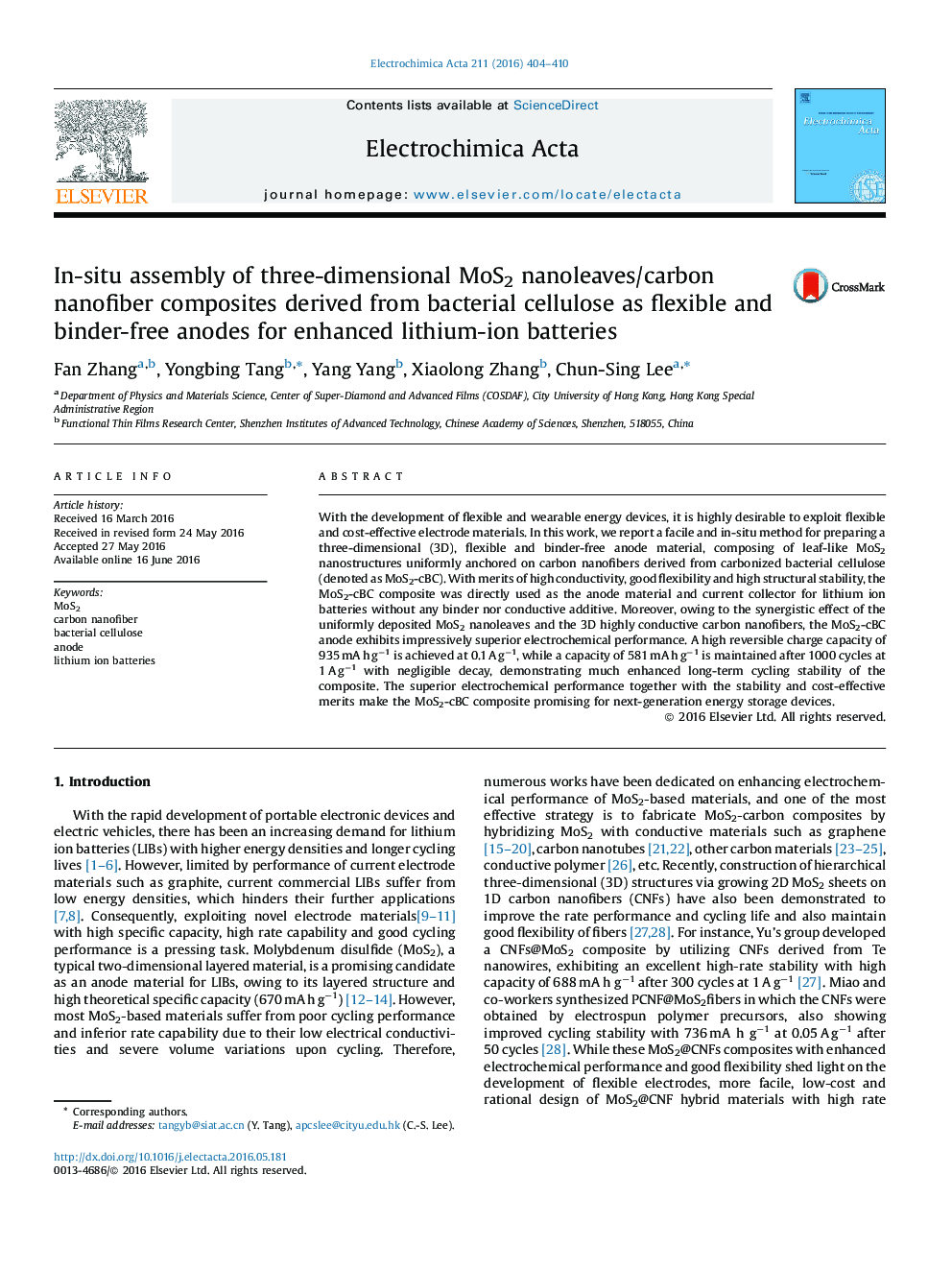| Article ID | Journal | Published Year | Pages | File Type |
|---|---|---|---|---|
| 6606325 | Electrochimica Acta | 2016 | 7 Pages |
Abstract
With the development of flexible and wearable energy devices, it is highly desirable to exploit flexible and cost-effective electrode materials. In this work, we report a facile and in-situ method for preparing a three-dimensional (3D), flexible and binder-free anode material, composing of leaf-like MoS2 nanostructures uniformly anchored on carbon nanofibers derived from carbonized bacterial cellulose (denoted as MoS2-cBC). With merits of high conductivity, good flexibility and high structural stability, the MoS2-cBC composite was directly used as the anode material and current collector for lithium ion batteries without any binder nor conductive additive. Moreover, owing to the synergistic effect of the uniformly deposited MoS2 nanoleaves and the 3D highly conductive carbon nanofibers, the MoS2-cBC anode exhibits impressively superior electrochemical performance. A high reversible charge capacity of 935 mA h gâ1 is achieved at 0.1 A gâ1, while a capacity of 581 mA h gâ1 is maintained after 1000 cycles at 1 A gâ1 with negligible decay, demonstrating much enhanced long-term cycling stability of the composite. The superior electrochemical performance together with the stability and cost-effective merits make the MoS2-cBC composite promising for next-generation energy storage devices.
Related Topics
Physical Sciences and Engineering
Chemical Engineering
Chemical Engineering (General)
Authors
Fan Zhang, Yongbing Tang, Yang Yang, Xiaolong Zhang, Chun-Sing Lee,
